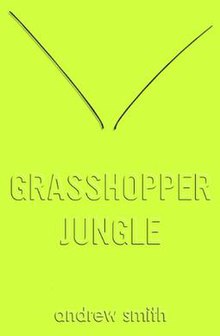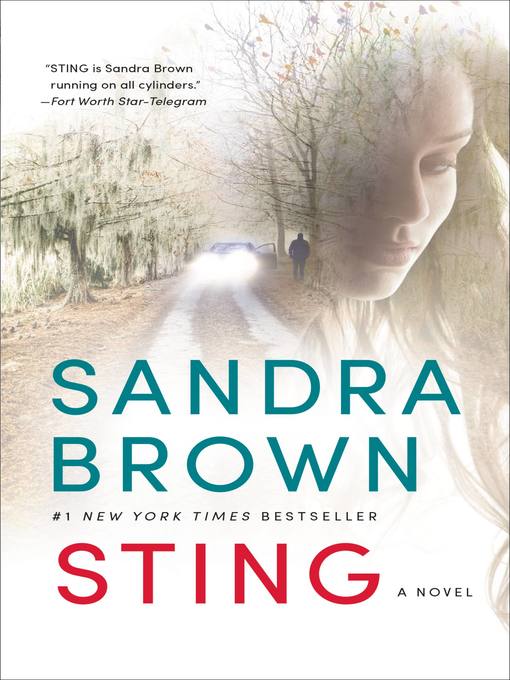Emperor Mollusk Verses the Sinister Brain
By A. Lee Martinez
Synopsis:
Emperor Mollusk. Intergalactic Menace. Destroyer of Worlds. Conqueror of Other Worlds. Mad Genius. Ex-Warlord of Earth. Not bad for a guy without a spine. But what's a villain to do after he's done. . . everything. With no new ambitions, he's happy to pitch in and solve the energy crisis or repel alien invaders should the need arise, but if he had his way, he'd prefer to be left alone to explore the boundaries of dangerous science. Just as a hobby, of course.
Retirement isn't easy though. If the boredom doesn't get him, there's always the Venusians. Or the Saturnites. Or the Mercurials. Or. . . well, you get the idea. If that wasn't bad enough, there's also the assassins of a legendary death cult and an up-and-coming megalomaniac who have marked Emperor for their own nefarious purposes. But Mollusk isn't about to let the Earth slip out of his own tentacles and into the less capable clutches of another. So it's time to dust off the old death ray and come out of retirement. Except this time, he's not out to rule the world. He's out to save it from the peril of The Sinister Brain!
Elements of Science Fiction:
Many Sub-genres:
While this really isn't an element of Science Fiction books, I wanted to point out this book is more on the comedic side of Science Fiction. To find this book, I looked up comedic space operas using Novelist and other search resources, and this title was one of the suggestions.
Story line is speculative, often set in the future:
This story is actually set in essentially present-time, perhaps a bit into the future. While no dates are stated, there are many flashbacks of both the Emperor's conquests and how he managed to quietly and "peacefully" conquer Earth, which also do not have any sort of dates attached to them-- they were simply "in the past." All of the technology and situations are quite futuristic, however.
Often explores What Ifs or real-world quandaries outside of their normal settings:
This book definitely explores the questions of what if aliens were real, what if they tried to conquer our planet, and what if one actually succeeded? What would a "conquered" Earth look like? What would the galaxy look like with aliens who had advanced-levels of futuristic weaponry? Emperor Mollusk Verses the Sinister Brain explores the answers to these any many more sci-fi-related questions.
Setting evokes otherness:
The details of the various alien planets and species that inhabit them make the readers see how different they are but similar in certain ways as well. While Zala and the other Venusians from Venus have scales and feathers, they value honor and respect as humans do. The book describes many alien societies that are different yet resemble our own Earthly societies in some ways.
World-building:
While not done in the traditional ways, Emperor Mollusk and his group go to many different areas on and around Earth, and there are many flashbacks on Mollusk's other infamous adventures on other planets in our solar system. As the novel progresses, more details about the solar system and the states of the many diverse planets in it are revealed.
Can be technical and jargon-filled, often is not:
Emperor Mollusk often goes into great detail when telling his companions about the technicalities of his inventions or the machinery around them. However, he usually then explains what he just said in layman's terms because either Zala, the Venusian commander, or one of the other characters obviously does not understand what he is saying.
Often focuses more on storylines than on characters:
This is a plot-driven book, with the main focus placed on the action of the Sinister Brain's schemes to outwit Emperor Mollusk. However, though the main storyline and the flashbacks, readers see Emperor Mollusk's motivations behind his actions and how his character developed into what we see at the beginning of the novel. No other characters are examined like this, though, and the main focus is squarely on the storyline.
Read-a-likes:
Redshirts by Jon Scalzi
The Hitch-hikers Guide to the Galaxy by Douglas Adams
The Sheriff of Yrnameer by Michael Rubens
From the Notebooks of Dr. Brain by Minister Faust
By A. Lee Martinez
Synopsis:
Emperor Mollusk. Intergalactic Menace. Destroyer of Worlds. Conqueror of Other Worlds. Mad Genius. Ex-Warlord of Earth. Not bad for a guy without a spine. But what's a villain to do after he's done. . . everything. With no new ambitions, he's happy to pitch in and solve the energy crisis or repel alien invaders should the need arise, but if he had his way, he'd prefer to be left alone to explore the boundaries of dangerous science. Just as a hobby, of course.
Retirement isn't easy though. If the boredom doesn't get him, there's always the Venusians. Or the Saturnites. Or the Mercurials. Or. . . well, you get the idea. If that wasn't bad enough, there's also the assassins of a legendary death cult and an up-and-coming megalomaniac who have marked Emperor for their own nefarious purposes. But Mollusk isn't about to let the Earth slip out of his own tentacles and into the less capable clutches of another. So it's time to dust off the old death ray and come out of retirement. Except this time, he's not out to rule the world. He's out to save it from the peril of The Sinister Brain!
Elements of Science Fiction:
Many Sub-genres:
While this really isn't an element of Science Fiction books, I wanted to point out this book is more on the comedic side of Science Fiction. To find this book, I looked up comedic space operas using Novelist and other search resources, and this title was one of the suggestions.
Story line is speculative, often set in the future:
This story is actually set in essentially present-time, perhaps a bit into the future. While no dates are stated, there are many flashbacks of both the Emperor's conquests and how he managed to quietly and "peacefully" conquer Earth, which also do not have any sort of dates attached to them-- they were simply "in the past." All of the technology and situations are quite futuristic, however.
Often explores What Ifs or real-world quandaries outside of their normal settings:
This book definitely explores the questions of what if aliens were real, what if they tried to conquer our planet, and what if one actually succeeded? What would a "conquered" Earth look like? What would the galaxy look like with aliens who had advanced-levels of futuristic weaponry? Emperor Mollusk Verses the Sinister Brain explores the answers to these any many more sci-fi-related questions.
Setting evokes otherness:
The details of the various alien planets and species that inhabit them make the readers see how different they are but similar in certain ways as well. While Zala and the other Venusians from Venus have scales and feathers, they value honor and respect as humans do. The book describes many alien societies that are different yet resemble our own Earthly societies in some ways.
World-building:
While not done in the traditional ways, Emperor Mollusk and his group go to many different areas on and around Earth, and there are many flashbacks on Mollusk's other infamous adventures on other planets in our solar system. As the novel progresses, more details about the solar system and the states of the many diverse planets in it are revealed.
Can be technical and jargon-filled, often is not:
Emperor Mollusk often goes into great detail when telling his companions about the technicalities of his inventions or the machinery around them. However, he usually then explains what he just said in layman's terms because either Zala, the Venusian commander, or one of the other characters obviously does not understand what he is saying.
Often focuses more on storylines than on characters:
This is a plot-driven book, with the main focus placed on the action of the Sinister Brain's schemes to outwit Emperor Mollusk. However, though the main storyline and the flashbacks, readers see Emperor Mollusk's motivations behind his actions and how his character developed into what we see at the beginning of the novel. No other characters are examined like this, though, and the main focus is squarely on the storyline.
Read-a-likes:
Redshirts by Jon Scalzi
The Hitch-hikers Guide to the Galaxy by Douglas Adams
The Sheriff of Yrnameer by Michael Rubens
From the Notebooks of Dr. Brain by Minister Faust

